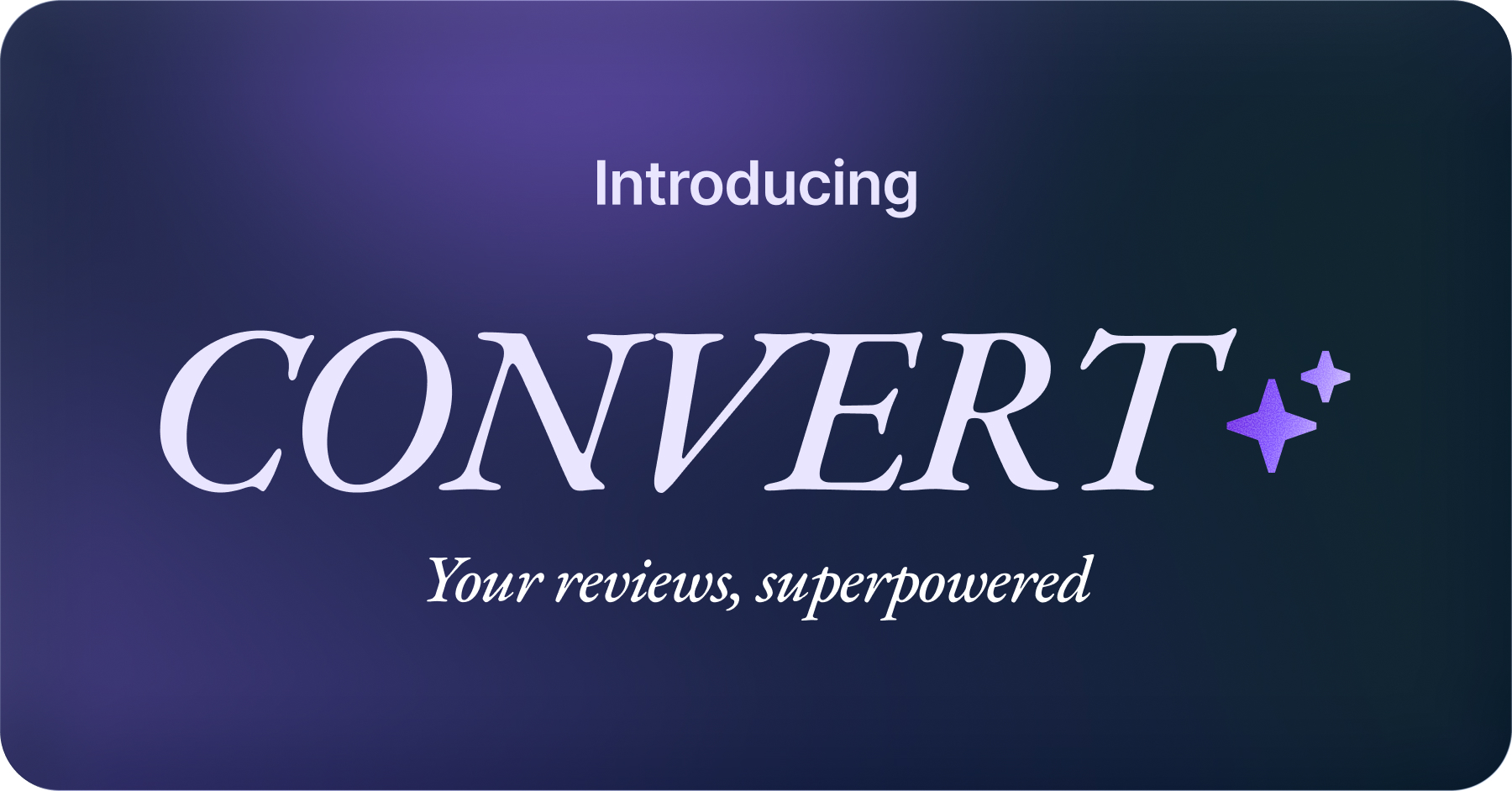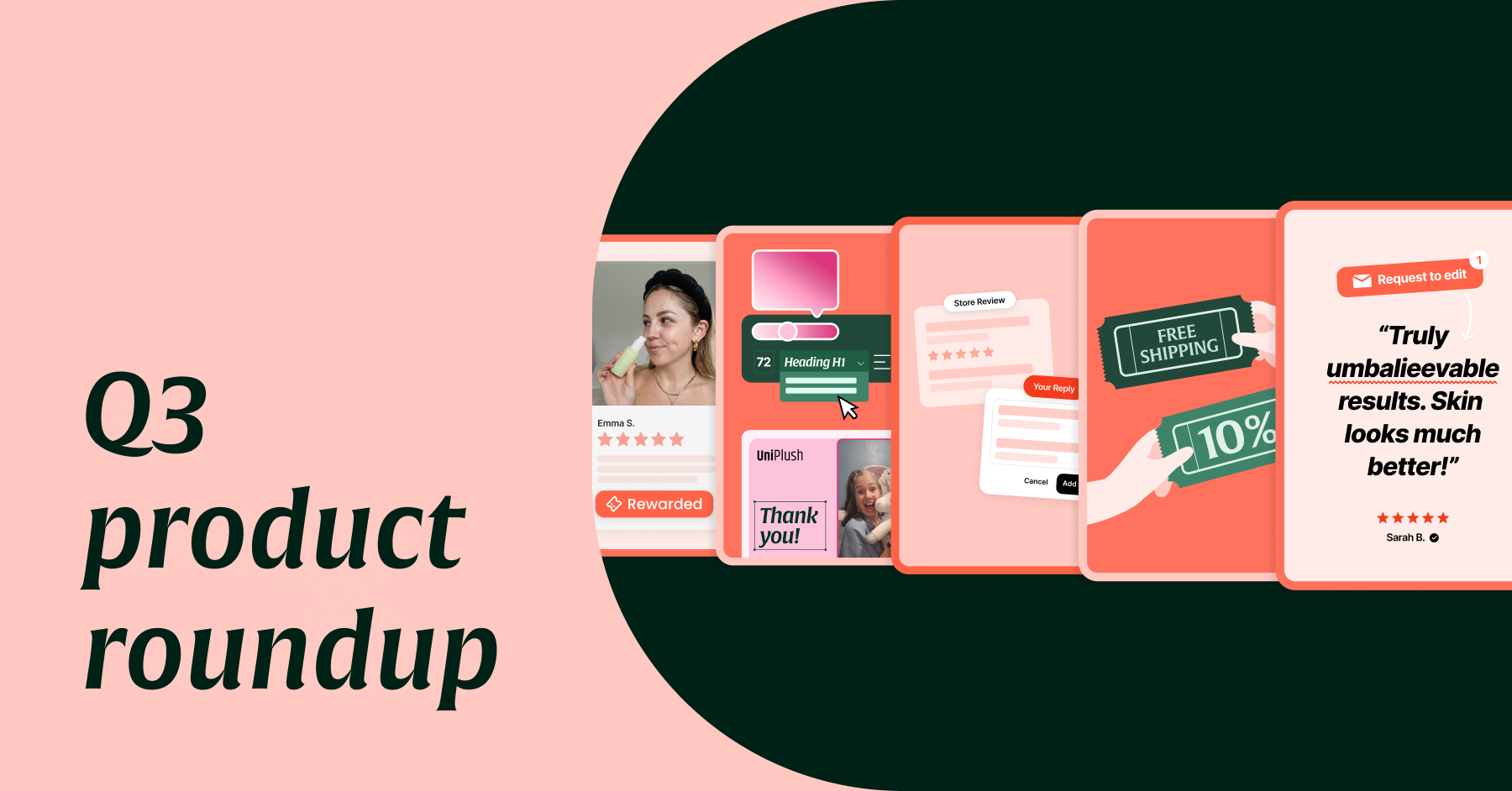BFCM 2022: Maximize Your AOV, CLTV and ROAS with This Simple Two-Part Formula

The holiday season is almost here.
Back to School promotions are making way for Halloween decorations. Soon, we'll be right in the middle of Thanksgiving, Christmas, Hannukah, and every other end-of-year celebration.
And more importantly (for ecommerce brands, at least) - Black Friday and Cyber Monday are just around the corner.
If you haven't fully fleshed out your BFCM plans for 2022 yet, don't worry.
This year, we'd like to offer you a simple two-part formula you can use to supercharge your BCFM campaigns.

By leveraging this approach, you'll be able to maximize Average Order Value: the key to unlocking increased CLTV, increased ROAS, and a rock-solid foundation for growth moving forward.
And if you need some help implementing this strategy, stick around to the end - we have a solution that you'll love.
How Important is BFCM For Ecommerce Brands?
Before we discuss our formula in detail, let's take a minute to ask…
Just how important is Black Friday Cyber Monday for ecommerce brands?
To answer that, here are statistics from Shopify’s report on Black Friday Cyber Monday 2021.
Last year, total global sales transacted on Shopify over BFCM hit $6.3 billion (a 23% increase on 2020 figures). Average cart value across the board was over $100, and 47 million shoppers purchased something from a Shopify store just like yours.
Taking a broader view on the market, almost $10 billion changed hands in the US market on Black Friday alone. This figure rises to $33.9 billion when we take the whole “Cyber Week” into account: close to 5% of all US ecommerce transactions in 2021. That’s crazy.
The holiday season as a whole is one of the busiest buying periods of the year.
That idea is reinforced by this research roundup from personal finance site Mint. The majority of shoppers said that their holiday shopping kicked off in November (coinciding with early Black Friday promos and a general shift towards ramped-up spending).
But the impact of BFCM goes beyond just revenue.
According to reports published by Campaign Monitor, the average open rate for all emails hovers around 20%, whereas click-through rates come in at 2.3%.
Also, on Black Friday, Abandoned Cart emails average 34% open rates (a 70% increase over baseline) and click-through rates of 9% (almost 4x higher than standard).
On the advertising side of the equation, studies by Wayflyer reported that average Facebook ad spend during Black Friday week was 90% higher than in previous weeks (despite year-on-year ROAS declines).
They also report substantial boosts to website conversion rates (~70%), elevated spend across multiple marketing channels, 37% increases in average traffic, and ~60% of sales coming from brand-new customers.
All this is to say:
Black Friday Cyber Monday 2022 matters a lot for ecommerce brands.
Good performance during Cyber Week could be exactly what you need to take your brand to the next level.
With that in mind, let’s take a look at how we can take action on these insights.
What Factors Move The Needle For Ecommerce Conversions?
Maximizing the number of people that take action in response to your brand is both an art and a science (and you would want to nail it during BFCM this year).
When it comes to this topic, there are more than a few dimensions we need to think about.
Consider it this way - all of the following factors (and countless others) influence your conversions:

And while they’re all worth discussing, there's one factor in particular we’d like to zone in on:
Social proof.
Social proof is within your control. There are many actions you can take to build it over time; it’s no rocket-science. And it's the key to building high-trust relationships with purchasers (critical if you want to leverage The Customer Creator Principle for your brand).
Social proof takes many forms. Reviews, word-of-mouth referrals, number of followers on social media, brand endorsements, influencer shoutouts - all of these are examples of social proof in action.
But not all social proof is created equal. And while there’s a lot of debate as to what form is best, visual reviews are undeniably valuable.
It’s even more true during BFCM. Look at this:

And this:
.png)
And this:

When it comes to optimizing conversions, nothing works quite as well as impactful, authentic reviews for ecommerce brands.
For proof of this, consider some of these astounding statistics we profiled in an article we wrote earlier this year:
- Displaying 100 online reviews on your website could boost conversions as much as 37%.
- Almost two-thirds of consumers pay more for products with good online reviews - and a third pay even more for products with excellent reviews.
- Supporting the idea that authenticity beats perfection, showcasing negative reviews for your business can boost sales by 85%.
- Increasing the star rating of a given product by just .1 can increase conversions by 25%.
- 62% of buyers are more likely to purchase if your reviews include real photos and videos of your products in action (the kind of reviews Loox helps you capture seamlessly).
So, why visual reviews over text-based ones?
Simple: when it comes to social proof, visual cues make all the difference.
Humans are visual creatures. Our brains process visual images 60,000 times faster than the written word, and we can recognize them after just 13 milliseconds of exposure.
(Considering that customers will form first impressions with 50 milliseconds of interacting with your brand, that’s important.)
Buying decisions are made emotionally and then justified logically.
Within .05 seconds of seeing your ad or landing on your website, potential customers have already started to form an opinion about your brand.
If you’re relying on the strength of your copy or text-based reviews to influence their perception, that’s not nearly enough time to have an impact…
And even when they begin to read, they don’t do so attentively. Studies have shown that the average website visitor reads only 20-28% of the words on any given page.
The visual cues you provide don’t just set the tone for your entire relationship. For the majority of your potential customers, they’re all that matters.
That’s why compelling visual reviews deserve their place in the two-part AOV Optimization Formula.
With that said, let’s consider why strategic upsells deserve the same recognition.
Why Strategic Upsells Are Critical For Maximizing Average Order Value
According to our two-part formula, increasing Average Order Value is a matter of leveraging:
- Impactful Visual Reviews
- Strategic Upsells

Why do we want to maximize AOV in the first place?
Simple.
Average Order Value is defined as follows:
The average amount of money that a customer spends every time they place an order.
The more money customers spend each time they buy from you (all else being equal):
- The higher your ROAS
- The higher their LTV
- The more you can afford to spend on acquiring that customer
Advertising costs skyrocket during the holiday season - and consumer spending does, too.
It’s important to remember that you don’t just have to focus on winning new customers (which is inherently expensive). Once you’ve made that initial sale, you can focus on getting more out of those customers instead of constantly chasing new ones.
Getting your offer in front of qualified buyers at the time of the year they're statistically most likely to buy is smart marketing…
But the amount you can afford to spend on reaching them is going to be influenced by how much you can expect to earn by winning their business.
Increasing Average Order Value gives you all the leverage you need to acquire customers at scale, grow your business and build an advantage your competitors will struggle to overcome.
That’s where strategic upsells come in.
Upselling (and cross-selling) is a strategy ecommerce brands employ to increase Average Order Value by offering more of what customers already love.
Post-purchase upsell example:
- Your customer buys 1 bag of coffee.
- After checkout, they see an offer for a coffee mug.
Since both products are related to each other, customers are likely to take the offer.
Strategic upsells are the second part of our AOV Optimization Formula because they leverage the credibility gains built by great reviews and turn them into higher revenue and bigger profits.
How much higher?
According to Sumo, upsells typically boost revenue by 10-30% on average when implemented. And that’s just the tip of the iceberg:
- Properly integrated upsells can be 20x more effective than less involved strategies.
- Users who navigate onto a product page because it was featured as a “Recommended Product” elsewhere are 4.5x more likely to convert.
- Some brands have been able to increase conversions by 800% by effectively implementing cross-sells.
And to make all of this work even better, you can combine post-purchase upsells with visual reviews during this year’s BFCM.
(Read on to see how you can do this with just one Shopify app)
Combine Visual Reviews With Post-Purchase Upsells
By understanding the value of both visual reviews and upsells, we can now speak about the lever that will make the difference - a lever that consistently sees conversion rates you’ve never heard of before:
Loox Post-purchase Upsells.
For the first time ever, you can add photo reviews to your post-purchase upsell offers and increase trust where it matters.
This is your shortcut to this year’s BFCM success. The numbers don’t lie:

To back this up, we asked the VP of Marketing at Gorilla Bow what his thoughts are:
(Even Yahoo! Finance picked up the story of Loox Post-purchase Upsells)
It’s go time. Make this year’s BFCM the best ever. Install Loox now on your Shopify or Shopify Plus store:



.jpg)
